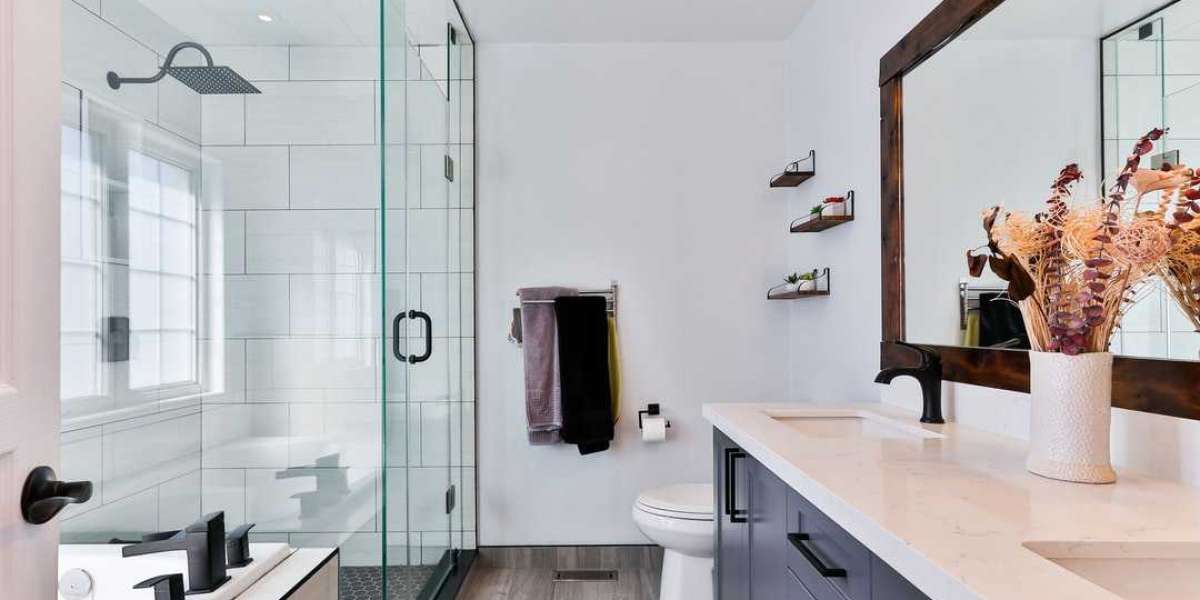Bathroom fittings play a vital role in both the functionality and aesthetics of your bathroom. Proper maintenance is essential to ensure they continue to function smoothly and look great for years to come. Many people overlook the importance of caring for these fixtures, but with just a little attention and care, you can extend their lifespan and avoid costly repairs or replacements. In this guide, we will discuss some simple and practical steps you can take to maintain and care for your bathroom fittings, keeping them in top condition.
1. Regular Cleaning
The most basic step in maintaining your bathroom fittings is regular cleaning. This helps to remove dirt, grime, and soap scum that can accumulate on faucets, showerheads, and other fixtures. When these substances are left to build up, they can lead to corrosion, tarnishing, and blockages.
How to Clean:
- Faucets and Showerheads: Use a mild soap or detergent and a soft cloth or sponge to clean the surface. Avoid abrasive cleaners or scrubbing pads, as they can scratch and damage the finish.
- Toilet Fixtures: A gentle cleaning solution or vinegar mixed with water can effectively clean toilet fixtures. Make sure to scrub under the rim and other hidden areas where bacteria and stains can accumulate.
- Tiles and Grout: Use a grout cleaner or a mix of baking soda and water to scrub between the tiles and around the fixtures. Clean grout will prevent mold and mildew growth, which can spread to your fixtures over time.
For bathroom fittings made of materials like chrome, stainless steel, or brass, be sure to check the manufacturer's guidelines for cleaning recommendations. Always dry fittings with a soft cloth after cleaning to prevent water spots and mineral buildup.
2. Preventing mineral deposits and limescale
In many regions, hard water is a common problem. Hard water contains high levels of calcium and magnesium, which can leave mineral deposits and limescale on your bathroom fittings. Over time, these deposits can reduce water flow, clog showerheads, and damage the appearance of your fixtures.
Solutions:
- Vinegar Soak: To remove limescale from showerheads and faucets, soak the affected areas in a mixture of vinegar and water for 30 minutes. This will help dissolve the mineral deposits. After soaking, scrub gently with a brush or sponge.
- Water Softener: If hard water is a persistent problem, consider installing a water softener system. This can help reduce the mineral content in your water, which will minimize the buildup of limescale on your bathroom fittings.
3. Check for leaks and drips.
Even the smallest leak or drip can cause significant damage to your bathroom fittings over time. Leaks can lead to rust, water stains, and damage to surrounding areas like countertops and tiles.
How to prevent:
- Inspect Regularly: Regularly check your faucets, showerheads, and toilets for any signs of leaks or drips. Look for water pooling around the base of fixtures or stains on the walls or floors.
- Fix Immediately: If you notice a leak, address it right away. Many minor leaks can be fixed with a simple washer replacement or tightening of connections. If you’re unsure, call a professional plumber to handle the repairs.
By catching leaks early, you can prevent more extensive damage and avoid costly repairs.
4. Maintain Proper Water Pressure
Water pressure that is too high can put unnecessary strain on your bathroom fittings, leading to wear and tear over time. Conversely, low water pressure can result in poor water flow and clogging of fixtures.
How to Manage Water Pressure:
- Install a pressure regulator: If you live in an area with high water pressure, consider installing a pressure regulator to maintain optimal levels. Most bathroom fittings are designed to function properly within a certain pressure range, typically between 40 and 60 psi (pounds per square inch).
- Check showerheads and faucets: Over time, mineral buildup can reduce water pressure. Regularly clean your showerheads and faucets to prevent blockages and maintain proper water flow.
Maintaining the right water pressure will help extend the lifespan of your bathroom fittings and prevent unnecessary strain on pipes and fixtures.
5. Use the Right Products
When it comes to bathroom maintenance, using the right products is essential. Not all cleaners and materials are suitable for every type of bathroom fitting.
What to Consider:
- Avoid Harsh Chemicals: Strong chemicals like bleach or ammonia can corrode the finish on faucets and other fittings. Instead, opt for mild cleaning solutions or natural alternatives like vinegar and baking soda.
- Use a Soft Cloth: Always use a soft cloth or sponge when cleaning your bathroom fittings to prevent scratches and damage.
- Sealants and Protectants: For materials like brass and copper, you may want to apply a protective sealant to prevent tarnishing and keep them looking new.
By using the right products, you can keep your bathroom fittings in pristine condition without causing any damage.
6. Prevent rust and corrosion
Bathroom fittings are constantly exposed to moisture, making them prone to rust and corrosion over time. This can weaken the fittings and make them more likely to break or malfunction.
How to prevent:
- Wipe Down After Use: After using your bathroom, wipe down any water from the faucets, showerheads, and other fixtures. This simple habit can go a long way in preventing rust and corrosion.
- Ventilation: Ensure your bathroom is well-ventilated to reduce humidity levels. Excess moisture in the air can accelerate rust and corrosion. Using an exhaust fan or opening a window can help.
By keeping your fittings dry and ensuring good airflow in your bathroom, you can prevent the buildup of rust and corrosion on your bathroom fittings.
7. Upgrade and replace worn-out parts
No matter how well you maintain your bathroom fittings, there will come a time when parts wear out and need to be replaced. Knowing when to upgrade or replace certain components is essential for the long-term care of your bathroom.
When to Replace:
- Worn Seals and Washers: If you notice constant dripping or leaking from a faucet, the internal seals or washers may be worn out. Replacing these small parts can fix the problem and prevent further damage.
- Damaged Finishes: If the finish on your fittings is peeling, tarnishing, or corroding beyond repair, it might be time to replace the fixture entirely. This not only improves the appearance but also ensures the fixture continues to function properly.
- Outdated Fixtures: If your bathroom fittings are old and outdated, consider upgrading to newer models. Modern fittings often come with water-saving features, improved durability, and stylish designs.
Regularly assessing the condition of your bathroom fittings and making necessary replacements will ensure that your bathroom remains functional and visually appealing.
8. Consult professionals when needed.
While many maintenance tasks can be handled by homeowners, some issues may require professional assistance. If you’re unsure about how to repair or maintain a specific fitting, it’s best to consult a plumber or bathroom specialist.
When to Call a Professional:
- Complex Leaks: If you have a leak that you can’t identify or fix on your own, it’s best to call a professional plumber. Ignoring a leak or attempting a DIY repair without the proper knowledge can lead to bigger problems.
- Installation of New Fixtures: If you’re upgrading your bathroom fittings, hiring a professional for installation can ensure the job is done correctly and prevent issues down the line.
- Major Repairs: For more significant issues like water damage, rust, or severe wear, a professional can assess the situation and recommend the best course of action.
Seeking professional help when needed will save you time, money, and potential headaches in the long run.
Conclusion
Maintaining and caring for your bathroom fittings is an essential part of keeping your bathroom looking great and functioning properly. Regular cleaning, checking for leaks, managing water pressure, and using the right products are all simple steps that can go a long way in extending the life of your fittings.
If you’re looking for high-quality bathroom fixtures, visiting a reputable store like a Kohler showroom in Surat is a great way to find durable and stylish options. For those in the area, be sure to check out Taps and Tubs for a range of bathroom accessories that will complement any bathroom design.
By following the tips outlined in this guide, you can ensure that your bathroom fittings remain in excellent condition, providing you with years of reliable use and enhancing the overall appeal of your bathroom.








